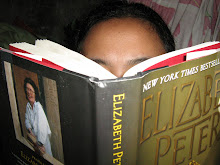When BB Gandanghari arrived on the local scene in January of this year, she announced “Rustom is dead.” Her former self was dead. A lot of people have had trouble with this concept: why would she announce that Rustom Padilla is dead when she herself is alive? What was it, a publicity stunt? I do not claim to be privy to what goes on in BB’s mind, but when I heard her say those words, for some reason I thought of Audrina Adare. Is not being forced to behave in a way which he knows is not true to his identity traumatic enough for a person to want to “kill” what he has become? To want to be able to show his real self, even after over 40 years? There has to be an end, in order to have a new beginning. Audrina deluded herself, of course, but she was a child. BB would probably not call what she is now a self-deception. She apparently knows what she is doing, and she chose to throw everything away and become BB Gandanghari. As she herself has said, she did not just up and say one day that her old self was gone. She maintains that it took a lot of time and self-searching for her to come to this end.
In my high school days, I chanced upon a book by an author known for her twisted modern Gothic tales told from the viewpoint of children. The book was hailed as her best, although I didn’t know it at that time. The title was “My Sweet Audrina”; the author was V. C. Andrews, who also wrote the chilling Dollanganger series.
What made the book stand out was its premise that sometimes when a person cannot accept and live with what he has become, and cannot kill his physical self, he might subvert his psyche to the point where it may be regarded as “dead,” and let another persona take over. A fresh start. Someone who is what he wanted to be. That was what happened to Audrina Adelle Adare (see, I could not forget her name, although it’s been over ten years since I last read that book). A victim of gang rape on her own birthday, Audrina could not accept what had happened to her. Aided and abetted by her own parents, her mind created an alternative. She made herself believe that the tragedy had happened to her older sister, the “other Audrina,” who had died before she was born. Her parents, to save their child’s sanity, even put up a gravestone over an empty grave, saying that it belonged to the “other Audrina.” When Audrina grew up, of course, she had to come to terms with her own self-deception, but by that time she was hopefully strong enough to face her traumatic past, as symbolized by the empty grave in the churchyard.
In the Tarot deck, there is a card called “the Hanged Man”: a man hanging upside down, his foot in the hangman’s noose. According to some traditions, he personifies Odin, the Norse God, who in pursuit of wisdom spent nine days and nights hung on Yggdrasil, the World Tree, “myself offered to myself.” The implication being that the acquisition of wisdom to some degree requires the death of the self.
Five Dramas That Are My Equivalent Of Comfort Food, Part 2
-
So, yes, well. I've added to my "comfort dramas" list in the meantime. You
know which ones I'm referring to... the dramas you tend to go back and
rewatch w...
12 years ago











